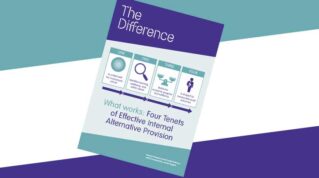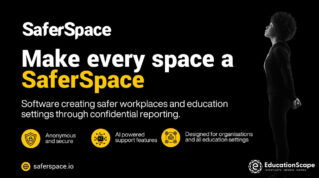Of the approximately 33,000 deaf children in the education system, 84 per cent attend mainstream school. In many cases, they are the only deaf pupil in their school.
While being deaf is not a learning disability, deaf children can struggle to reach the same literacy levels as their hearing peers, with many falling behind by the time they take their KS1 phonics test. When it’s time to sit their GCSEs, there’s an established attainment gap of 17.5 months.
To combat this, it’s crucial to understand and address the unique educational needs of deaf students. But despite the vast majority of deaf children attending mainstream school, many teachers will only ever come across one or two deaf children in their entire careers, and it can be difficult to know how best to support them without prior experience or specialist training.
But when schools get it right, they not only support their deaf students better, they can also embed deaf awareness across the entire school population. These children then grow up to be deaf-aware adults who can contribute to making the world a more accessible place.
So, to mark the end of Deaf Awareness Week 2024 and the start of a more deaf-aware world every day, here are five ways all schools can better support their deaf pupils and foster a deaf-friendly culture.
Combat noise with fabrics and furnishings
Schools are inevitably noisy places. Even during quiet working moments there will always be the ambient noises that make up the soundtrack of a classroom – from the scraping of chair legs on the floor to the flow of pens and pencils in and out of pots. For younger children especially, this may be their first time in such a loud, disorienting environment.
Giving a classroom an ‘acoustic treatment’ can make a huge difference. Simple DIY measures like lining felt inside pen pots or adding felt bottoms to chair legs can minimise reverberations. Likewise, you can use soft furnishings like drapes, blankets, and cushions as noise dampeners.
Get hearing classmates involved
Where staff and time allow, consider starting a lunch or after-school club where hearing students have the opportunity to pick up daily ‘cued’ and signed words to use with their deaf peers. Start with the basics like polite greetings and first-name introductions. These small but fundamental skills help to build communication bridges.
Cultivating curiosity with practical knowledge can instill a deaf-friendly culture. In my experience, it’s not long before classmates are showing the adults how it’s done – and they make incredible candidates for expressing visual languages.
Get outside the classroom
It’s important to break up classroom learning with more varied activities so we’re not putting a constant demand on deaf students to overcome communication and language barriers. Getting outside of the classroom can be great for this.
Tap into whatever interests your deaf pupil may have and try to build this into your lesson or homework planning to give them opportunities to combat the ‘listening fatigue’ that can come with navigating the world as a person with hearing loss. Using core skills in a different environment will help them to return to the classroom feeling more confident and refreshed.
Get clued up on communication methods
If you know a deaf student will be joining your class next year, find out what their preferred method of communication is as early as possible. British Sign Language (BSL) might be the most common communication method for deaf people, but it’s certainly not the only one. Many children will mix and match, making use of other methods like Cued Speech (a lipreading support system that can take as little as 10 hours to learn).
Knowing your incoming student’s needs in advance will give you time to prepare for any necessary adaptations to your teaching style (like accommodating a Communication Support Worker or making greater use of visual aids).
Enquire about deaf awareness training courses for yourself and your colleagues, or reach out to charities like Deaf Choices UK to see what kind of support is freely available.
And remember, ‘deaf’ is used as an umbrella term and refers to a spectrum of hearing abilities, from moderate to profound deafness. It’s important not to make assumptions about what a deaf student can and can’t hear.
Ensure access to pastoral care is equal
Starting a new school or entering into a new year group can be a daunting time for any child. We know that pastoral care is essential for academic success and emotional wellbeing, so it’s important to make sure that access to this kind of support is as readily available for deaf pupils as it is for their hearing peers. It can play a huge role in empowering deaf students to advocate for their own needs, while also facilitating social interactions, fostering friendships and addressing any issues related to frustration or exclusion.












Your thoughts